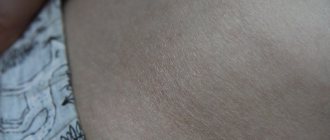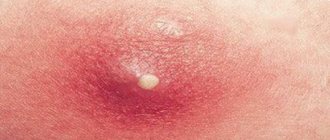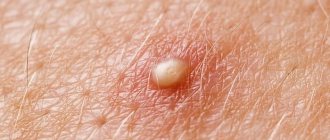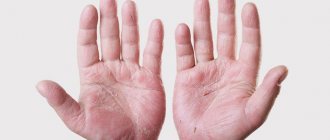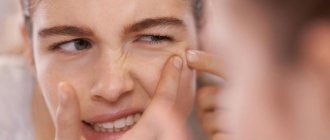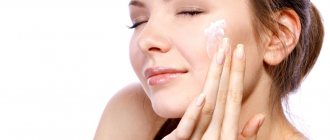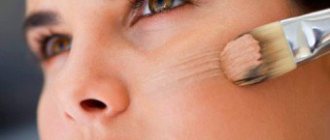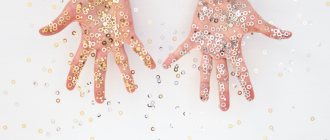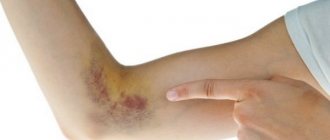All people, and women in particular, want to look beautiful. Therefore, all kinds of sores on the face greatly poison life. Sometimes they become the reason for reluctance to leave home and visit crowded places.
Therefore, correct identification of the varieties and further treatment of skin imperfections associated with a particular disease is extremely important.
And also an equally significant activity is identifying the cause of the sore on the face. Our article, based on medical knowledge and research, will help you with everything, so that you can properly treat various sores on your face and temporary skin defects.
____________________________
Why do sores occur on the face?
There are a huge number of reasons for the occurrence of various types of inflammation on the face. However, they are all divided into:
Sores on the face caused by deviations in the internal organs; skin diseases.
In general, most sores on the face are caused by an unhealthy lifestyle and poor diet: drinking alcohol, smoking, and consuming unhealthy, fatty foods.
But also failures of any system of the human body can cause the appearance of various kinds of ulcers, acne, etc.
They are the following diseases:
Blood-vascular system; digestion; reproductive system.
Also, sores on the face develop as a result of various dermatological diseases.
, which develop as a result of non-compliance with personal hygiene rules or infection from a carrier of the infection.
What are the types of sores on the face?
Sores on the face are divided similarly to the diseases that caused them. Major skin diseases, including the face, include:
Dermatitis: preoral, allergic, atopic (eczema) and contact; herpes; acne; streptococcal infection.
Symptoms of dermatitis
Dermatitis is a serious disease that requires medical attention. Therefore, it is very important to identify its symptoms.
Varieties of dermatitis have symptoms that vary slightly, but are generally similar:
Redness – strong or weak; itching; peeling; blisters.
If at least one of the above signs is present, you must immediately visit a doctor, or your face may become completely covered with sores.
Herpes
Herpes is a disease of the facial skin and mucous membranes caused by infection. Potentially, we are all carriers of the virus of this disease, which in some is present in a progressive form.
Herpes looks like an unpleasant sore that feels painful when touched.
. Under no circumstances should it be recommended to touch or scratch such sores on the face.
Acne
Blackheads are red pimples that can appear on the face regardless of age.
They suffer from oily skin
, the cells of which become clogged with excess sebaceous glands - bacteria multiply in this environment and acne occurs. They may also appear as black dots.
Streptococcus on the face
Another trouble on the face is streptococcal infection or pyodermatitis.
This disease manifests itself in the form of red blisters filled with pus
and is contagious. Water procedures intensify this disease.
What to do with a crust on your face?
The condition of your facial skin directly signals health problems. And you shouldn’t mistakenly believe that a crust on your face is just a consequence of weathering, frost or heat. There are many more factors that lead to excessive peeling of the skin, the appearance of growths, and inflammatory spots. A frivolous attitude can lead to the formation of cracks and bleeding areas, which will be impossible to combat with ordinary cosmetics. The problem requires adequate medical intervention and examination of the whole body.
Text: Eduard Matveev · December 7, 2016
How to cure acne
Getting rid of acne or blackheads can be done effectively with remedies that you can make yourself using a variety of products.
Lemon.
Just cut a slice of lemon and wipe it on your face in places where there are acne. Afterwards, apply sunscreen because lemon makes your skin more exposed to the sun's rays.
Raw potatoes.
Make a face mask from it.
Toothpaste.
It needs to contain silicon dioxide, but it does not contain sodium lauryl sulfate.
Ice.
Wipe painful areas with it.
Tea tree oil.
With frequent use, it effectively removes sores on the face.
Aspirin.
Grind and add water to make a paste, then apply on pimples.
If folk remedies remain completely powerless, it means you did not show enough patience. They need to be used every day, but they will not help immediately. The exception is aspirin - it should be used no more than twice a week.
You can also use faster-acting treatment if you want an immediate effect:
Adapalene; Gepar sulfur-GF Skinoren
So, in order to cure sores on the face, it is important to determine their cause and take appropriate treatment accordingly.
If you are unsure about the cause of sores or acne, you should seek the help of a doctor.
Treatment
, therapeutic are sufficient to heal facial wounds .
Photo 2. Healing agents need to be changed depending on the stage of this process. Source: Flickr (kenga86)
Surgery (suturing) may only be necessary for deep injuries, provided there is enough skin to cover the wound. But even in this case, if the edges of the skin are quite smooth, it would be preferable to glue them together with special medical glue.
Depending on the size and depth of the wound, treatment takes 1-4 weeks .
Medications
When treating wounds on the face, all measures are aimed at accelerating cell regeneration and preventing infection.
In most cases, local treatment is indicated: regenerating , antiseptic , painkillers , with the addition of antibiotics .
The most popular means:
- Actovegin and Solcoseryl - for quick healing;
- Dermatix, Contractubex, Cicaderma - to prevent the formation of scar tissue and the resorption of existing scars;
- Levomekol , Levosin, Eplan have an antibacterial effect;
- Bepanten or Panthenol , Sinyakoff, Rescuer, Doctor, 911 are excellent as first aid for injury, but have also proven themselves as a way to treat various injuries.
If the wounds are very extensive, deep, or difficult to heal, medications can also be prescribed orally or by injection.
Note! At the first stage of healing, when the wound becomes wet, you should not use ointments, this will not give the desired effect, but, on the contrary, will delay the recovery process. It is better to use medicinal gel or powder preparations.
Folk remedies
Fans of natural treatment can resort to folk recipes, as many medicinal plants have good healing properties. In the treatment of wounds you can use:
- aloe juice and leaves;
- Kalanchoe juice and leaves;
- plantain leaf;
- ointment from plantain or calendula can be made independently by mixing ground plantain leaves or flowers with petroleum jelly in a ratio of 1:5.
When self-medicating, it is important to clearly monitor the condition . If there is no improvement within 3-7 days, but redness, swelling or pain increases, pus or ulcers appear, or the temperature rises (whole body or locally), you should immediately consult a doctor.
Causes of weeping wounds on the face
When weeping wounds appear on the face, this may mean that not only the outer shell of the body is suffering, but also some functions are impaired. The causes may be different:
- disturbance in the digestive system
- allergic reaction to medications, cosmetics, etc.
- depression, stress, neurosis
- alcoholism
- exposure to toxic chemicals
- diabetes
But you shouldn’t immediately sound the alarm if similar rashes appear on your face. Perhaps the reason for their appearance lies elsewhere. Cosmetological factors can also cause such a reaction:
- reduced immunity
- unbalanced diet
- polluted environment
- poor hygiene
Strange pimples on neck
Quite often, the main reason for the appearance of strange pimples on the back of the neck is a disruption in the functioning of the endocrine and digestive systems. To make a more accurate diagnosis, you will have to contact both an endocrinologist and a dermatologist. It is also not uncommon for the spread of strange acne sores on the neck to be a consequence of the introduction of infectious skin viruses or in the case of purulent cores of pathogenic microorganisms, which more often happens with a sharp weakening and decline of immunity.
Strange pimples with a stick
How to recognize and diagnose
Such skin rashes do not immediately appear clearly. You can take action in advance by detecting the symptoms of such wounds. In most cases, dermatitis begins with peeling and dry skin. Small crusts may form in areas of peeling. The area of skin becomes slightly swollen and red.
After a while, a redness forms at the site of redness. Rash blisters come in a variety of forms, with clear liquid, blood, or pus inside. After these rash blisters burst, weeping sores remain in their place. In more complex cases, weakness, fever appears, and the body begins to shiver.
If left untreated, there may be serious consequences such as anemia, intestinal disorders, bacterial infection. Dermatitis can also spread to the entire body and become chronic, which is difficult to cure and takes several years to treat.
Only a specialist can accurately diagnose the disease, so if you notice any symptoms, it is better to immediately contact a dermatologist. At the first examination and careful questioning, the doctor will be able to make a diagnosis on the day of treatment. Based on appearance, a dermatologist can make two diagnoses. The first is eczema, the second is dermatitis. With a more thorough examination, the diagnosis will be clarified.
Symptoms
All skin diseases on the face manifest themselves almost identically. It is possible to distinguish fungal pathology from viral pathology only in laboratory conditions.
Main features:
- small or large rash;
- cracked skin;
- ulcerative papules;
- red spots;
- skin tone;
- hematomas;
- burning and itching;
- acne;
- purulent acne;
- internal nodes;
- peeling and dryness;
- pigmentation.
The symptoms of skin diseases differ from ordinary acne due to the inflammatory process. This pathology is the cause of the development of dysfunction of internal systems and organs.
Methods for dealing with weeping sores
As it has already turned out, before starting treatment it is necessary to find out the cause and diagnosis. If the cause is an allergy. Then you should simply stop contact with the allergen and prescribe anti-inflammatory drugs.
First of all, wounds on the face should be healed with the help of regenerating drugs. For drying, you can use zinc ointment, iodine solution or brilliant green for local treatment. After drying the wounds, you should lubricate the dry crust with a moisturizing cream with the effect of tissue regeneration.
If the cause is hormonal or endocrine disruption, then treatment will be more difficult. In such cases, restorative therapy is prescribed. The use of antiallergic drugs that increase immunity and vitamin complex. In more complex cases - hormonal therapy.
In case of fungal infection, antifungal drugs are prescribed in combination with vitamins, immunoboosting drugs and sedatives. If herpes is diagnosed, the following treatment is prescribed:
- change in diet and hygiene
- local antiseptic treatment
- moisturize crusts with creams
- use of antiviral ointments and tablets
- boosting immunity
Strange pimple sores with a stick
How is this treated?
The creams and ointments we use to treat common acne often have little effect on stubborn acne. When diagnosed with severe acne like this, your dermatologist will likely recommend one or more of the following:
Oral antibiotics that help control the growth of bacteria and relieve the inflammation of the pimple sore in no time. Sometimes your acne may not respond to antibiotics. Or you may find that they stop working over time as addiction occurs over time.
Formulated creams, lotions, or gels with retinoid, a form of vitamin A, can help keep your pores from becoming clogged with oil and bacteria and help the antibiotics do their job.
Isotretinoin (formally known as Accutane, but now available as Claravis, Sotret, Myorisan, Amnesteem and Absorica) is quite effective in treating all types of acne, as well as other forms of severe acne. The recommended dosage for most of these drugs is to take 1 tablet alone or twice a day for about 5 months. For most patients with similar problems, this course of treatment clears the skin completely.
Spironolactone is a medicine that helps effectively get rid of cystic acne, especially in women.
Mandatory wound care information
During the course of the disease, there is no need to open and scratch wet wounds. This may contribute to the spread. During processing, you should be extremely careful and use some mandatory tips and recommendations:
- Wash and disinfect hands thoroughly before treating wounds
- Use sterile material for dressing
- Do not open a wet wound
- Do not tear off the stuck bandage, but moisten it with chlorhexidine and remove it.
What causes the appearance of ulcers on the face, what are the most common causes?
If you are interested in what a corneal ulcer is, read. As a rule, ulcers on the face appear as a result of previous factors. They can signal a serious illness, or appear as a result of constant contact with chemicals.
According to statistics, the main reason why ulcers form on the face is
- allergic reaction. It can be caused by excessive consumption of spicy, fatty and sweet foods. Immune system disorders can also contribute to the formation of ulcerations. The best option is not to guess what caused the appearance, but to immediately contact a dermatologist for help.
Judging in general, the causes of ulcers can be three factors:
- Traumatic – can be caused by physical impact or injury. The consequences of a burn or ionizing radiation can also cause ulcers.
- Neoplastic factors indicate serious diseases. This may be a malignant neoplasm such as malignant melanoma or sarcoma.
- Infectious diseases can also cause ulcers, not only on the face, but throughout the body. These include STIs, lichen, leishmaniasis.
Making a diagnosis yourself means pointing your finger at the sky. Ulcers on the skin of the face can signal a number of diseases, so only an experienced doctor can make a diagnosis, and only after conducting all the necessary tests and examinations.
Possible reasons
A dermatological problem causes a lot of trouble . Sometimes the skin on the cheeks is red and peels. Sometimes the roughness is not visually noticeable, but it can be determined by touch. In both cases, it is necessary to take measures to restore the epidermis.
You can tell whether the skin is healthy or not if you touch it with your fingers. In the absence of unpleasant phenomena, the surface of the dermis is smooth and velvety. If there are irregularities, bumps, roughness, or the skin begins to peel off, this indicates a problem that needs to be dealt with.
Skin diseases
A visit to a specialist will help you find out why the skin on your cheeks is peeling. the following dermatological diseases occur
- Ichthyosis.
- Allergic reaction of the diathesis type.
- Psoriasis.
- Seborrheic dermatitis.
The causes of ichthyosis are still unknown. There are suggestions that the disease is inherited and through contact with a sick person. As a rule, ichthyosis first affects the arms, feet or legs, and then may appear on the face. In this case, the skin on the forehead, chin, and cheeks turns red and peels, and may have a grayish-dirty tint.
Dry skin on the cheeks of an adult is due to allergies. With this phenomenon, the cheeks peel and become red. The top layer of the epidermis dies.
With psoriasis, flaky spots appear on the skin, which are difficult to hide with any means.
The symptoms of seborrheic dermatitis are similar to those of psoriasis, but the peeling may be more severe. The location of irritation is the area around the nose.
This does not end the list of dermatological diseases that cause flaking of the skin, which only a doctor can help identify. Based on the test results, the dermatologist will make an accurate diagnosis and prescribe treatment.
Hormonal disbalance
When a person goes through certain stages of life, his hormonal levels are able to change . For example, this is puberty, pregnancy, lactation and menopause. At each of these stages, a change in hormonal levels occurs, which can affect the dermis.
The teenage period is characterized by hormonal imbalance, a surge of testosterone and progesterone. This can lead to dryness and flaking of the dermis. As a rule, this goes away with age, but there are times when a visit to an endocrinologist is indispensable.
Women's skin may become dry and flaky during pregnancy and breastfeeding. Usually the problem disappears after childbirth and after completion of lactation, but during the period of hormonal changes it is recommended to moisturize the skin well.
During menopause, women also face dermatological problems. Peeling of the dermis occurs due to a lack of estrogens, which are responsible for the regeneration of the skin. A gynecologist-endocrinologist will help solve the problem and prescribe hormonal therapy if there are no contraindications.
You should not try to cope with peeling of the dermis caused by hormonal imbalance, since self-treatment can be harmful. Therefore, you cannot do without consulting a specialist.
Lifestyle and ecology
Peeling skin on the cheeks can occur due to poor nutrition, bad habits and environmental factors:
- Allergy due to abuse of fried, fatty, salty and sweet foods.
- Dryness and dehydration of the dermis due to lack of water in the body. It is worth remembering that in addition to tea and coffee, you need to drink at least 1.5 liters of clean water per day.
- It is very important to get enough sleep and walk in the fresh air as much as possible. Prolonged stay in a stuffy room negatively affects the epidermis.
- Drinking alcohol and smoking have a destructive effect on the cells of the body. Intoxication causes thinning of the epidermis, which causes sagging, wrinkles and flaking.
- Unfavorable environmental factors, such as emissions of heavy metals into the atmosphere or chlorinated water, slow down growth and destroy healthy epidermal cells.
- In autumn and winter, special care for the skin of the face and lips is required. This will help avoid chapping and peeling.
- The sun's ultraviolet rays have a detrimental effect on the dermis. In hot weather, cell dehydration occurs. To prevent the upper layer of the epidermis from drying out, it is recommended to use sunscreen in spring and summer, avoid prolonged exposure to the sun, and moisturize the skin.
- If the body does not receive enough vitamins, metabolic disorders occur, resulting in dryness and flaking on the face and other parts of the body. Vitamins A and B2 are especially important for the dermis.
Improper care
Very often, severe peeling of the skin is caused by improper care. The problem occurs when using some tools:
- It is not recommended to use lotions that contain alcohol. It is especially undesirable to do this if you have dry skin.
- For washing, it is better to choose soap that does not contain alkali, fragrances or fragrances. Such chemistry causes dryness, dehydration and allergic dermatitis.
- The cream should be chosen according to your skin type and age.
Ulcers on the face that arise as a result of mechanical stress: how to cure?
It happens that ulcerations appear as a result of constant contact with allergens. For example, this disease is quite common among industrial workers. What to do if this unpleasant phenomenon appears on the face?
First of all, it is necessary to examine the entire skin in order to exclude the presence of formations on other parts of the body. Of course, the best option for traumatic ulcers is to limit contact with the irritating substance that contributes to the formation of ulcers on the face. If this is not possible, you can try using pharmaceutical drugs:
- Vivorax;
- acyclovir;
- Zovirax.
These ointments have a pronounced anti-inflammatory and wound-healing effect, and they are also used when herpes occurs.
You can also try folk remedies - many claim that raw potatoes have a healing effect. Just rub it on a fine grater and apply a compress to the affected areas of the face. Tea tree oil also has an antiseptic and healing effect - if you are constantly in contact with irritating substances, you need to wipe your facial skin with it regularly.
The following pharmacological drugs will also have a quick effect:
- Skinoren;
- Adaptable.
They must be used in accordance with the instructions.
How to cure burns on the face?
Minor skin damage can be repaired on your own.
- First of all, it is recommended to use aloe juice - it relieves inflammation, accelerates regeneration, and has bactericidal properties. It is applied to a cotton pad and applied to the sore several times a day.
- Vitamin E, mixed in equal proportions with rose oil, accelerates healing. The composition is used to treat burns pointwise up to 3 times a day. The procedure is carried out only after the sore has cooled.
- In a similar way, use a propolis solution (1 tsp of the product per 3 tbsp of water) and honey mixed with vegetable oil. The wound heals quite quickly.
Clean and healthy skin for you!
The materials posted on this page are informational in nature and intended for educational purposes. Site visitors should not use them as medical advice. Determining the diagnosis and choosing a treatment method remains the exclusive prerogative of your attending physician.
Ulcers on the face are an unpleasant problem that causes a lot of trouble and inconvenience. This formation often causes itching and a burning sensation. The disease must be treated promptly, otherwise large wounds may occur that will begin to bleed over time.
A balanced diet will help with facial ulcers
If you are susceptible to allergic reactions or have a weak immune system, it is quite possible that ulcers appear for this reason. The body sends a signal: something urgently needs to be changed!
In order for ulcers and other formations on the face to stop bothering you, you need to remove possible allergens from your diet - honey, citrus fruits, nuts. You also need to reduce the amount of fatty foods you consume, do not buy store-bought sausages, forget about sweets and foods that contain GMOs. This includes mayonnaise, ketchups, various sauces, semi-finished products and instant food.
All people, and women in particular, want to look beautiful. Therefore, all kinds of sores on the face greatly poison life. Sometimes they become the reason for reluctance to leave home and visit crowded places.
Therefore, correct identification of the varieties and further treatment of skin imperfections associated with a particular disease is extremely important.
And also an equally significant activity is identifying the cause of the sore on the face. Our article, based on medical knowledge and research, will help you with everything, so that you can properly treat various sores on your face and temporary skin defects.
____________________________
Crusts or scabs on the face
Scabs most often form when, after injury, the skin creates a hard shell to protect the injured area and prevent further infection or injury. A scab is a hard crust. Healthgrades.com says that "Scabs are the result of new skin growing on damaged skin as it tries to heal." They can occur on the face, scalp, chest, or anywhere else where the skin is damaged. During the healing process, the scab may be slightly itchy or irritating. They are usually unsightly and cause embarrassment, especially when they are visible, for example on the face.
Why do sores occur on the face?
There are a huge number of reasons for the occurrence of various types of inflammation on the face. However, they are all divided into:
Sores on the face caused by deviations in the internal organs; skin diseases.
In general, most sores on the face are caused by an unhealthy lifestyle and poor diet: drinking alcohol, smoking, and consuming unhealthy, fatty foods.
But also failures of any system of the human body can cause the appearance of various kinds of ulcers, acne, etc.
They are the following diseases:
Blood-vascular system; digestion; reproductive system.
Also, sores on the face develop as a result of various dermatological diseases.
, which develop as a result of non-compliance with personal hygiene rules or infection from a carrier of the infection.
What are the types of sores on the face?
Sores on the face are divided similarly to the diseases that caused them. Major skin diseases, including the face, include:
Dermatitis: preoral, allergic, atopic (eczema) and contact; herpes; acne; streptococcal infection.
Symptoms of dermatitis
Dermatitis is a serious disease that requires medical attention. Therefore, it is very important to identify its symptoms.
Varieties of dermatitis have symptoms that vary slightly, but are generally similar:
Redness - strong or weak; itching; peeling; blisters.
If at least one of the above signs is present, you must immediately visit a doctor, or your face may become completely covered with sores.
Herpes
Herpes is a disease of the facial skin and mucous membranes caused by infection. Potentially, we are all carriers of the virus of this disease, which in some is present in a progressive form.
Herpes looks like an unpleasant sore that feels painful when touched.
. Under no circumstances should it be recommended to touch or scratch such sores on the face.
Acne
Blackheads are red pimples that can appear on the face regardless of age.
They suffer from oily skin
, the cells of which become clogged with excess sebaceous glands - bacteria multiply in this environment and acne occurs. They may also appear as black dots.
Streptococcus on the face
Another trouble on the face is streptococcal infection or pyodermatitis.
This disease manifests itself in the form of red blisters filled with pus
and is contagious. Water procedures intensify this disease.
